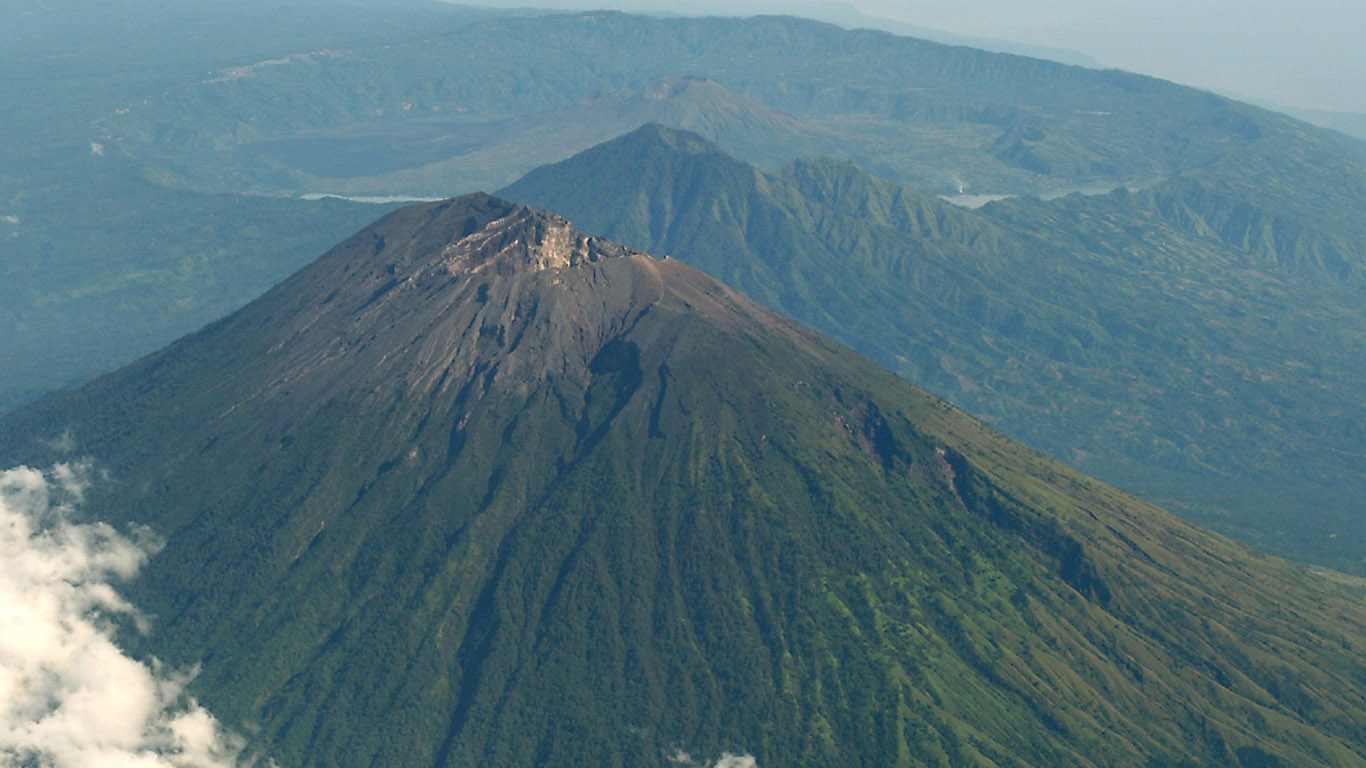White spider with a pattern. Poisonous stories from the life of the spider sak
These stories did not occur in the jungles of the Amazon or tropical Africa, not even in Central Asia. Inconspicuous at first glance, the yellow spider Sak bitten a man in the Krasnodar Territory. Right at home! The second of his relatives in the Voronezh region stung a seven-year-old child. Another case - suffered a woman living in Togliatti. What is it - the chance or the threat to be bitten really increased? We will tell you how to recognize a dangerous spider and what to do if "dating" could not be avoided.
One of the ten most poisonous spiders of the planet is heyrakantium or sak
Identification of a poisonous arthropod
Yellow heyracantium or sak is a typical representative of predatory spiders, which use the poison of a neuroparalytic action as a "hunting" weapon. Taking into account the fact that the hunter himself is small (average size is 5-10 mm), as a victim he chooses small insects - moth, aphids, caterpillars, ticks.
Interesting! For the "contribution" to the fight against agricultural pests, heyracantium has gained the reputation of an entomophage - a useful predator. For a year each individual destroys more than 2000 harmful larvae and insects.
How to recognize?
In the descriptions, the spider saik appears as a representative of the family with a bright appearance, which confirms the enlarged photo below made by the amateur of the microworld.
 Danger to man represent the jaws of the saka, with which he easily bites the skin and injects poison
Danger to man represent the jaws of the saka, with which he easily bites the skin and injects poison
The females are larger than the males. Some individuals in the span of the legs reach 2-2.5 cm, the body itself has a more modest size - 7-15 mm.
The spider is called yellow for the color of the abdomen. It has a bright yellow or beige color, in some species of heyracantiums, a reddish longitudinal strip is visible on the back. The cephalothorax is orange, with a powerful oral apparatus. In comparison with a small size, the chelici-chelicers are simply huge, ending with twisted claws. With their help, the spider sak bites the hard chitinous shell of insects and injects poison.
Heyracantium has characteristics that allow it to be identified quickly.
- An appreciable yellow-orange coloring.
- Instead of a radial web, he weaves spider webs. A dense thread randomly plaits inaccessible places, building a kind of cocoon.
- Quickly runs, can jump (do not try to sweep him with a broom!).
- For the nest selects secluded places. She settles under the stones, in the grass, the leaves rolled up by the straw. If he gets into the dwelling, he chooses the corners, where he is not disturbed by cleaning for many months.
Where does it occur?
The genus Heyrakantium, to which the spider saak belongs, consists of 194 species, lives in Europe, Asia, Africa, meets in Australia, America. In the post-Soviet space a couple of decades ago, representatives of the genus were well known to the inhabitants of the southern regions - Central Asia, the Caucasus, the Crimea, the Krasnodar Territory and the Rostov Region, the steppe of Ukraine.
The abnormally hot summer of recent years contributed to the fact that flocks of arthropods began to migrate to the north. Now a poisonous spider can be found in the suburbs, the Volga region, Southern Siberia, along the entire middle belt.
Interesting! One way to spread the heyracantium to the north is to migrate with motor vehicles. In search of a safe place, spiders often clogged in the slots of trucks, there were cases of settlement among the pipes of the fuel system.
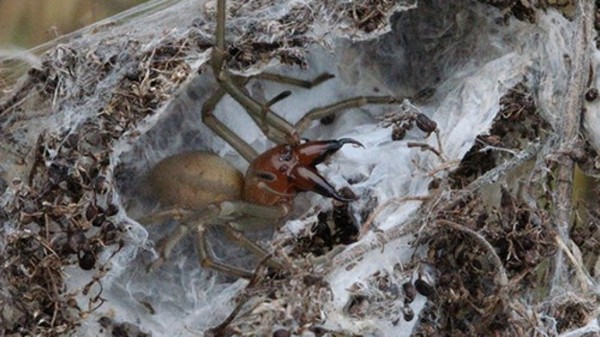 So it looks like a nest of a spider sack
So it looks like a nest of a spider sack How does it live and reproduce?
Spider Sak - night predator. He attacks in a leap, bites the chitinous shell and releases poison. Under its influence, the insect's insides turn into a "broth", which the hunter sucks with pleasure.
Arthropods live 1 year. The female lays eggs by the end of summer, after a few weeks spider leaves come out of them. She is a dedicated and dedicated mother. Protects the cocoon with eggs, and then the hatched spiders to the last, in the literal sense of the word, a sigh. In some species of heyracantiums, grown-up children are eaten by the mother (the phenomenon of matriaphagy).
Why are they classed among the ten most poisonous arachnids?
The bite of the yellow spider is not as bad as, for example, karakurt, but the poison is toxic. On the first symptoms, it resembles the bite of a hermit spider, which not only causes panic in the victim, but also deceives the doctors. By the way, most doctors in regions where a dangerous arachnid appeared recently, in general, it is difficult to diagnose a bite.
Consequences of a yellow bite bite. What to do?
Heyracantium with sharp jaws damages the skin, and not just stings the upper layer of the epithelium, such as an arpyopa. Therefore, the bite of the spider sack causes a violent protective reaction of the body, can lead to unpredictable consequences.- It is accompanied by burning pain, which then becomes dull.
- The area of the bite quickly swells and turns red.
- The place of the bite is itchy, on the wounded areas left by chelicers, blisters appear. There may come a local necrosis of soft tissues, in which the wound does not heal for weeks.
- Associated symptoms - chills, headache, nausea (detailed in the diagram). The power of manifestation depends on the individual characteristics of the organism. More vulnerable to bites of allergies.
- An arthropod can be a carrier of infections.
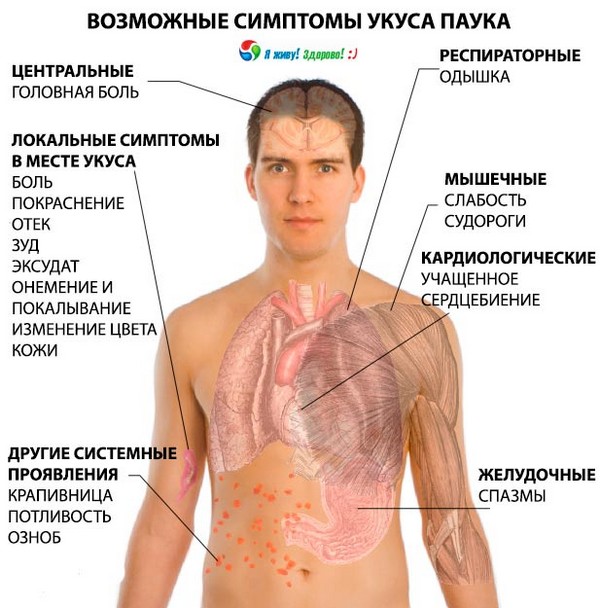 Possible symptoms of a bite of a poisonous arachnid
Possible symptoms of a bite of a poisonous arachnid
If a yellow sack or other poisonous spider has bitten, what should I do first?
- The wound should be treated with a solution of potassium permanganate, an alcohol tincture of calendula.
- Apply cold compress to the place of bite. For efficiency, add soda at a rate of 1 tsp. to a glass of water.
- It is desirable to immediately take an antiallergic drug (suprastin, tavegil).
After this, the victim should be shown to the doctor.
How to avoid "dating"
To avoid a meeting with the spider, adhere to the precautionary measures.
- Do not walk in the woods in open clothes.
- Work in the garden, in the garden with gloves.
- Do not touch the spiders with your hands.
- Do not kill them on the body, but only after you shake.
- Often, do cleaning up inaccessible places.
Advice! Yellow sak during the attack jumps, so the spider found in the room is neatly covered with a glass jar, bring a sheet of cardboard under the neck. Only after this, turn the jar, take out on the street, send a stream of insecticide into the tank.
Heyrakantium itself is afraid of people and attacks only for the purpose of self-defense. The greatest aggression manifests, if it is disturbed in the nest and when it gets under the clothes.
Spiderman in the Voronezh Region:
Spiders belong to the class of arthropods. They are also part of arthropod phylum Arthropoda, this word in Greek means "joined leg". The earliest of all arthropods is thought to be trilobite, which is a vanished marine animal. The first arachnid is a scorpion that lived about 500 million years ago. Today there are more than a million classified species of insects.
Under the general name of "spider" there are approximately 34,000 species of arthropods. Like other species of arachnid insects, spiders are terrestrial, although some individuals have adapted to freshwater life. Spiders belong to the class of arachnids, or arachnids, other detachments of this class include scorpions, false scorpions, haymaking spiders, ticks and others.
Science knows about 32,000 species of spiders. Spiders are huge and they are found all over the world. The length of most of them is less than 1 cm but spiders have a body length of about 9 cm. Spiders differ from other arthropods in their characteristic appearance and, in addition, the abundance of species. In the UK, there are more than 600 species of spiders, they are all safe for humans. They hunt other insects, have eight legs and a body divided into two parts: a joint head with a thorax and a large abdomen. Most spiders have eight eyes, arranged in two rows of four.
Many insects are herbivores, but most of the arachnids are predators, feeding mainly on insects. Spiders produce silk threads, spider silk is only 1/200 millimeter in diameter and is so light that if a spider could spin threads around the world, it would weigh less than 170 grams.
But there are spiders among the dead and deadly.
Brazilian Spider Wandering (Phoneutria Nigriventer)
The Brazilian wandering spider (Phoneutria nigriventer) is considered one of the most dangerous spiders in the world.
He lives in South America, does not create a network, and never stops at one place. That's why he got his name.
The size is only 10 centimeters in length, but it can kill about 225 mice with its poison.
He can hardly kill an adult, but can actually lead to a major allergic reaction. Fortunately, an antidote for his poison was found.
Mainly eats insects, spiders are smaller than themselves, and sometimes birds, or even lizards, which are much larger than it.
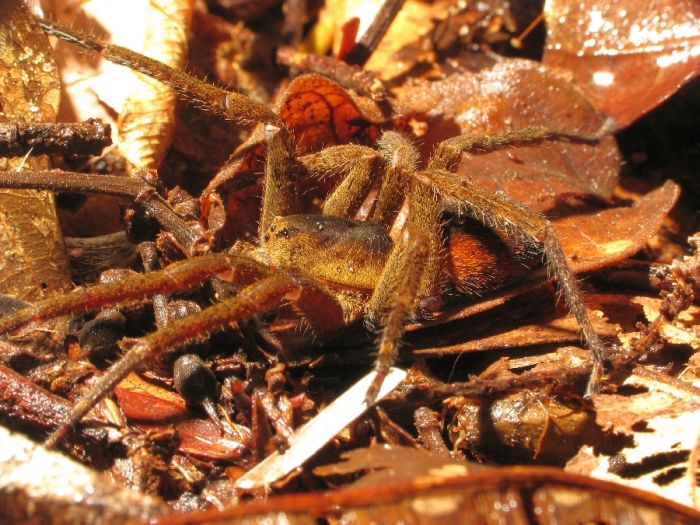
He prefers to hide in fruit baskets, especially among bananas, and so he received the nickname "banana spider".
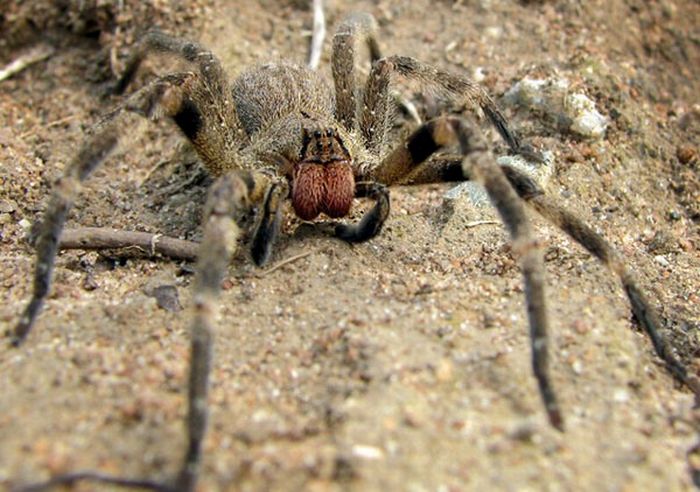
Brown hermit spider
The brown hermit spider, or the violin spider (Loxosceles), is one of the few spiders in the world that is harmful to humans.
Occurs in the Midwest and in the southeastern United States, especially in California.
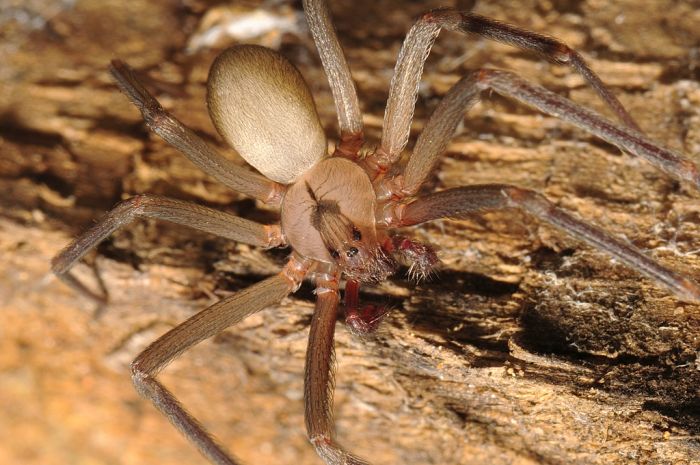
The spider is small - from 0.6 to 2 centimeters - which makes it not very noticeable. He is looking for warm, dry and dark places, such as lofts, cabinets, or old tires. Unlike most spiders with 8 eyes, the brown hermit has 6 eyes in 3 pairs.

When you bite a brown hermit, often the symptoms manifest themselves within the first 24 hours. At the same time, all the poison spreads throughout the human body. That is why it is important to hospitalize the patient as soon as possible. Hermits are not aggressive and bite only when threatened.
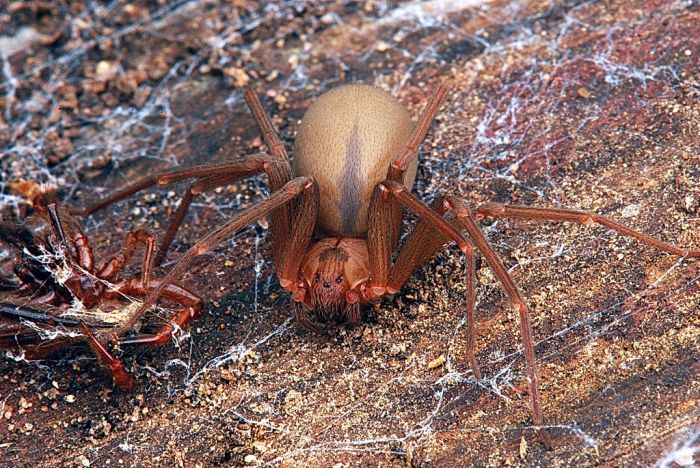
The Black Widow (Latradectus Lugubris)
This spider, as is known, is very dangerous to humans because of its poison, which exceeds the poison of the rattlesnake by a multiple of 15.
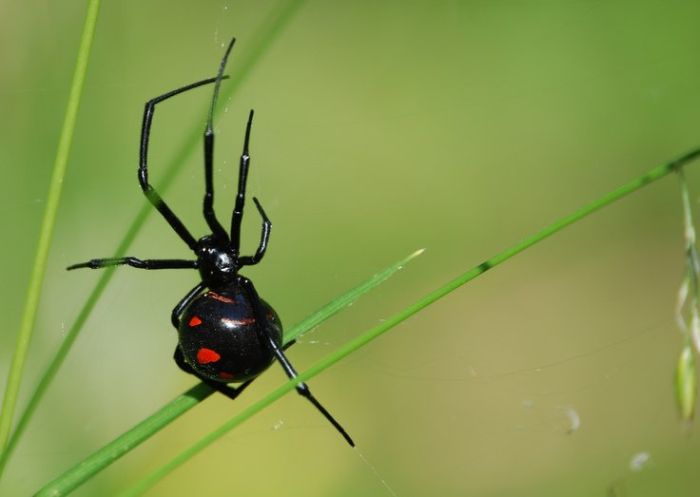
Black widows inhabit prairies and desert places around the world.

Female are about 2 cm in length and are more dangerous than males. The female always kills the males after mating, which is why the black widow got its name.

They attack only when they see a threat. The poison is very dangerous, and it is important that after the bite was withdrawn within 30 seconds.

Tarantula Tarantula (tarantula)
Tarantulas are a group of hairy and very large (about 3-4 cm in length) spiders, which belong to a family of tarantula spiders.
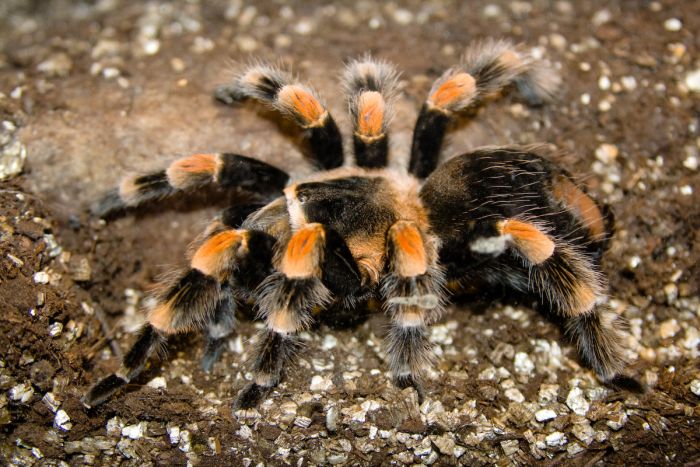
There are many varieties of coloring tarantulas - from light brown to dark gray.

Tarantulas live in deep and moist burrows in steppes and deserts.
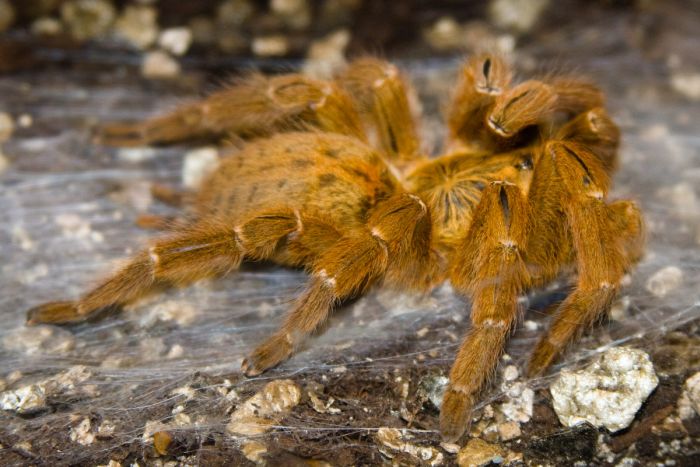
In the dark, tarantulas prey on their prey. poison tarantula is not very dangerous for humans, and some can even be kept as pets.
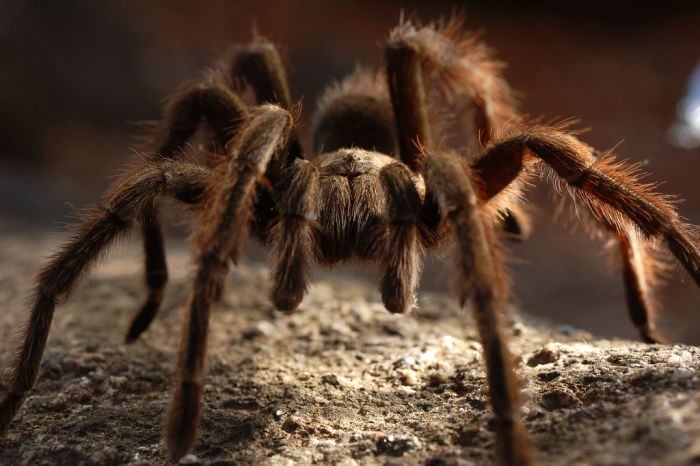
Water spiders (Argyroneta Aquatica, in Latin means "Silvery Net")
Water spiders or underwater spiders inhabit ponds in Northern and Central Europe and Northern Asia.
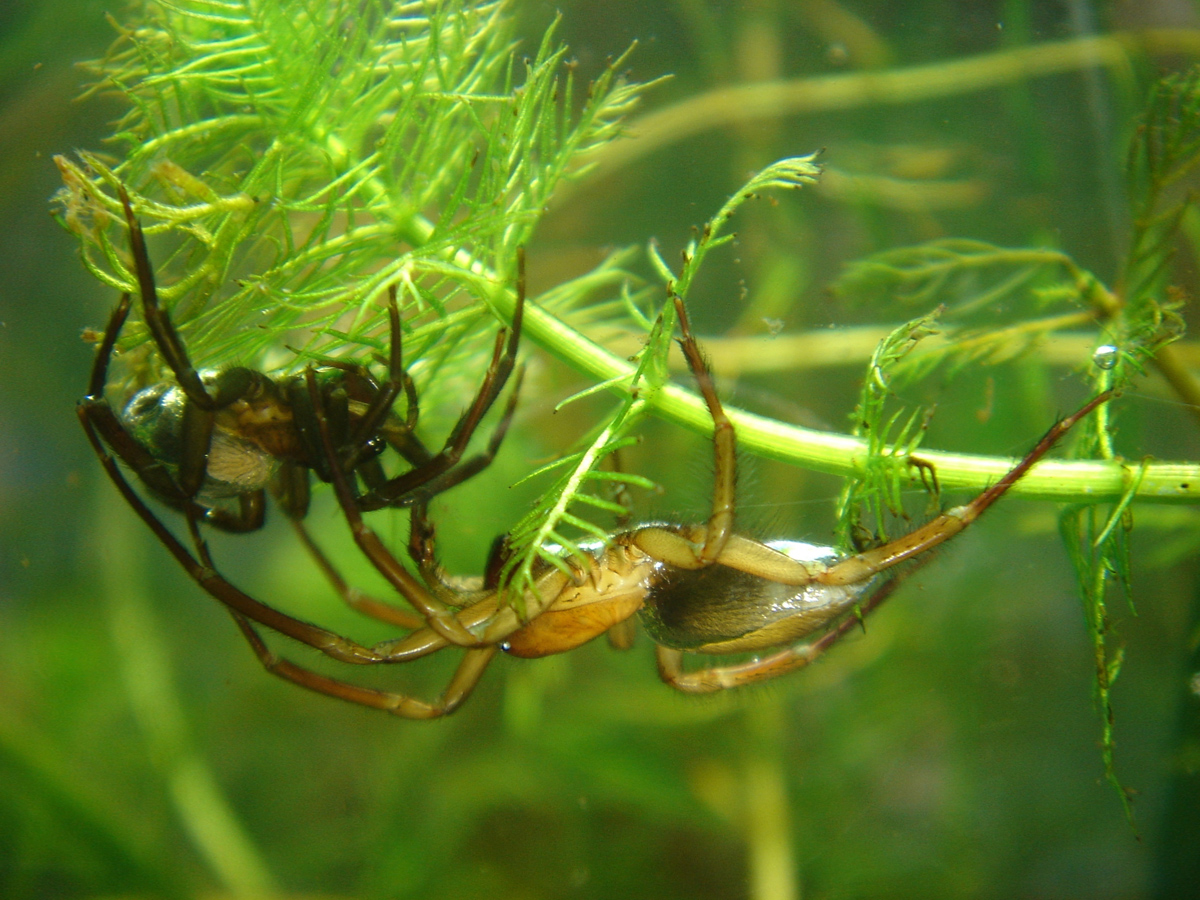
Argyroneta is one of the types of air-water spiders that spend their entire life underwater. Swim well, at a speed of 2.3-3.5 cm per second, with its length of 1.5-1.7 cm.
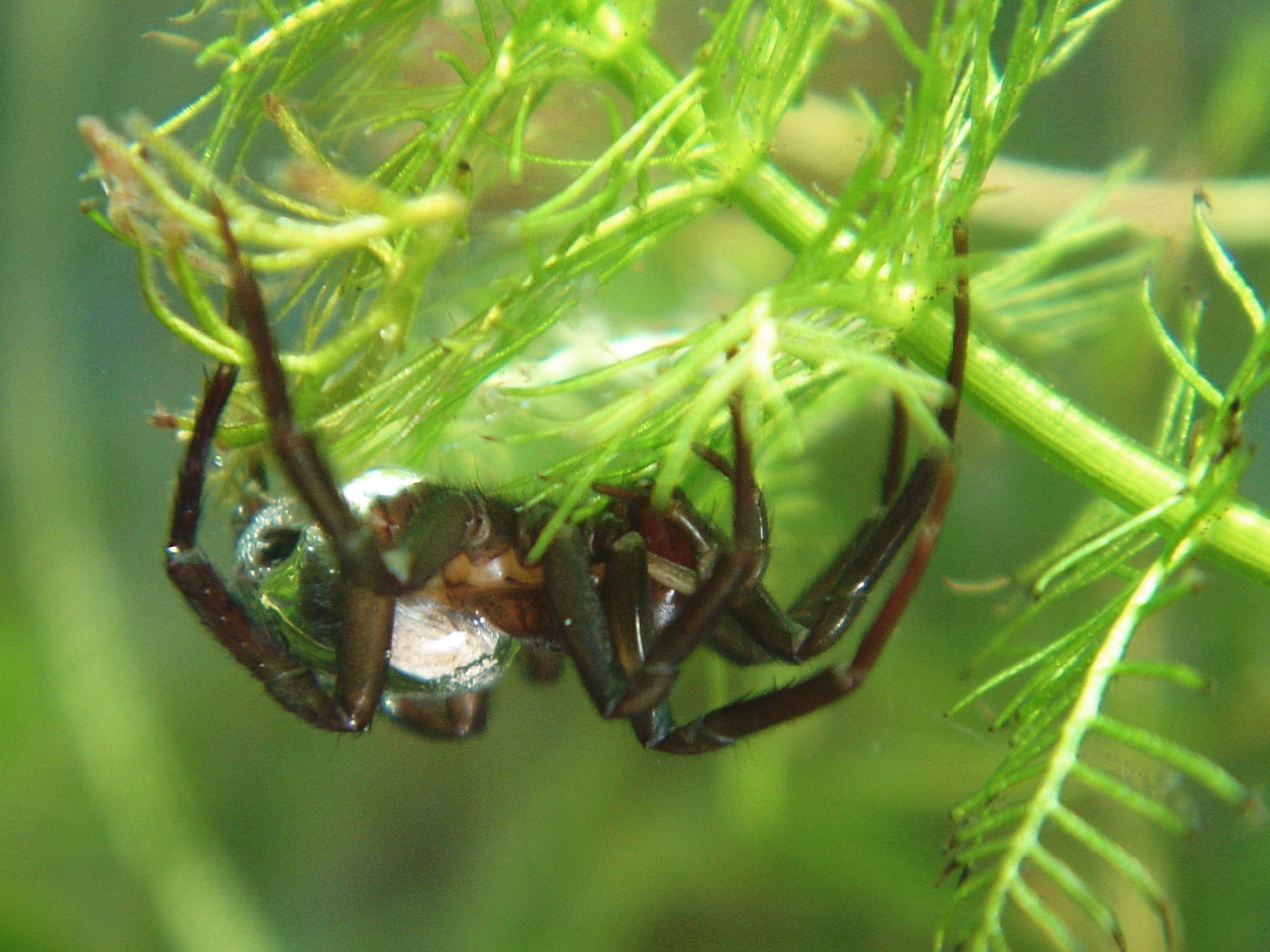
The water spider weaves its nets among aquatic plants and reserves with air from the surface, which looks like a diving bell.

Argyroneta is not considered harmful to humans. They hunt for larvae, crustaceans, which are found in water bodies.
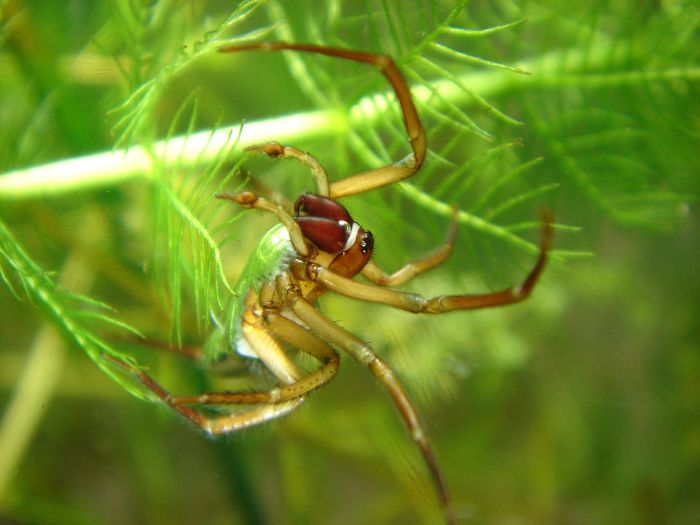
Crab Spider (Selenopidae)
Crab spider includes more than 3000 species of crab spider. They got their name from Selene, the Greek goddess of the Moon.
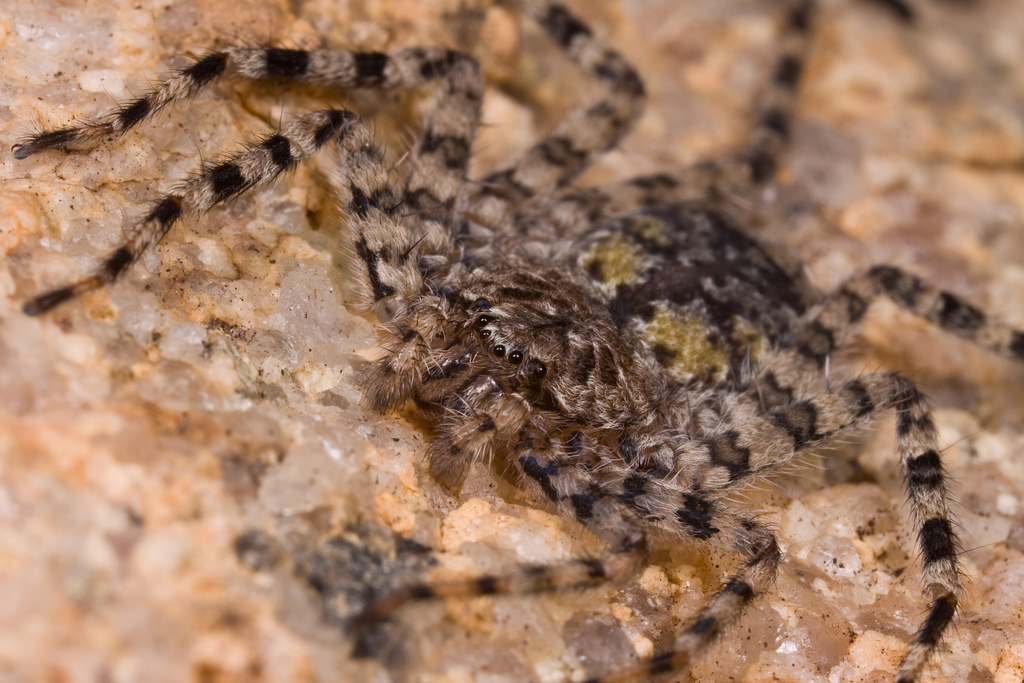
Like crabs they can move to the side and back.
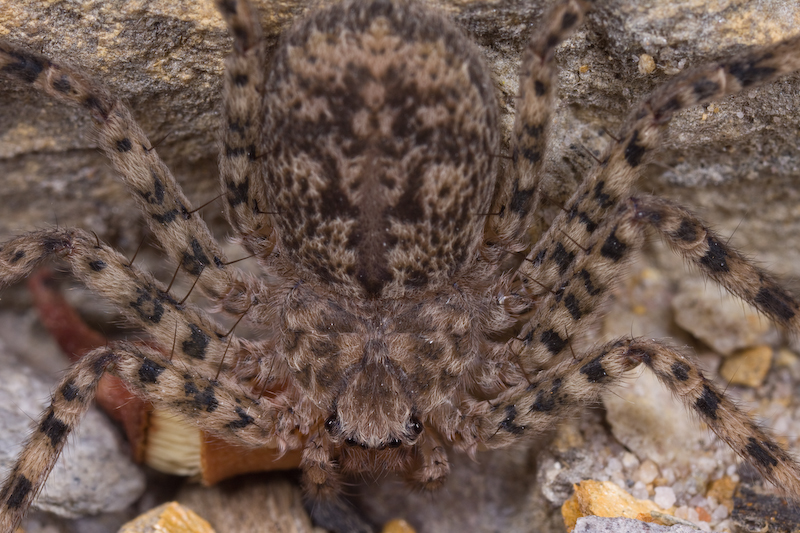
Typically, spiders crabs are in North America, and sometimes in southern Europe and Asia.
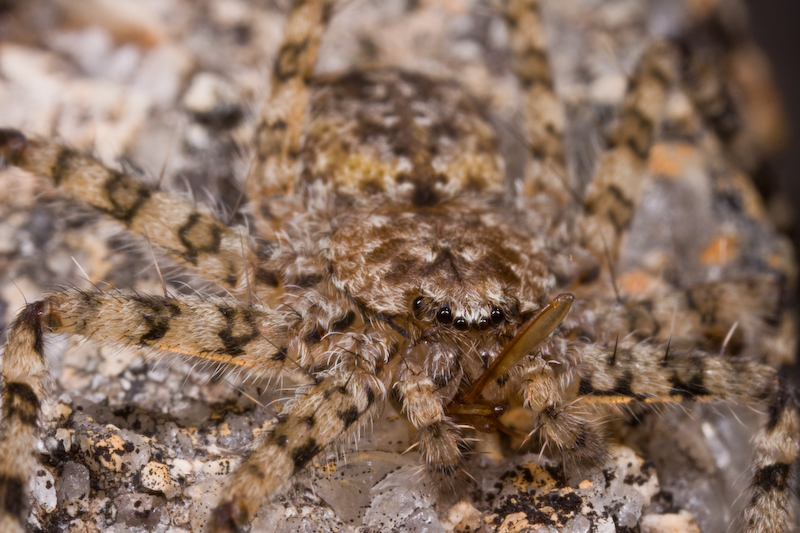
They do not weave cobwebs, they usually hunt on the ground, hiding among vegetation, for example, flowers.

Crab spiders are not particularly dangerous for humans, they are often confused with hermits, so they are very afraid.

Yellow Spiders Sak (Cheiracanthium Punctorium)
Yellow (gold) spider lives mainly in European countries. These spiders are rather small (10 mm in length).
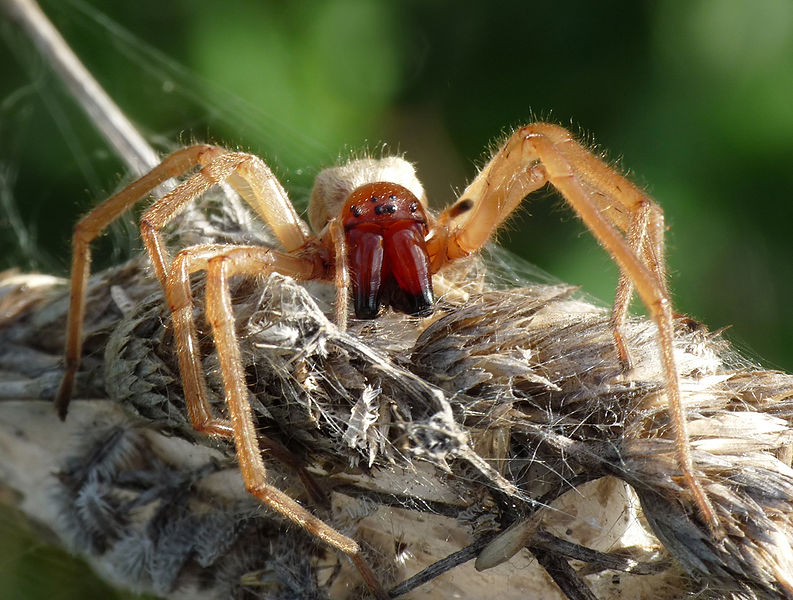
Yellow spiders build bags of a pipe type under things like stones, so they serve as a home. Sometimes they are inside the house.

Their bites are known to be at least clinically dangerous and are often misdiagnosed as bites of the hermit's brown spider.

Spider bite causes severe pain with the development of necrotic wounds (although not as intensely as due to the brown hermit).

Like other spiders, they tend to bite on the defensive.
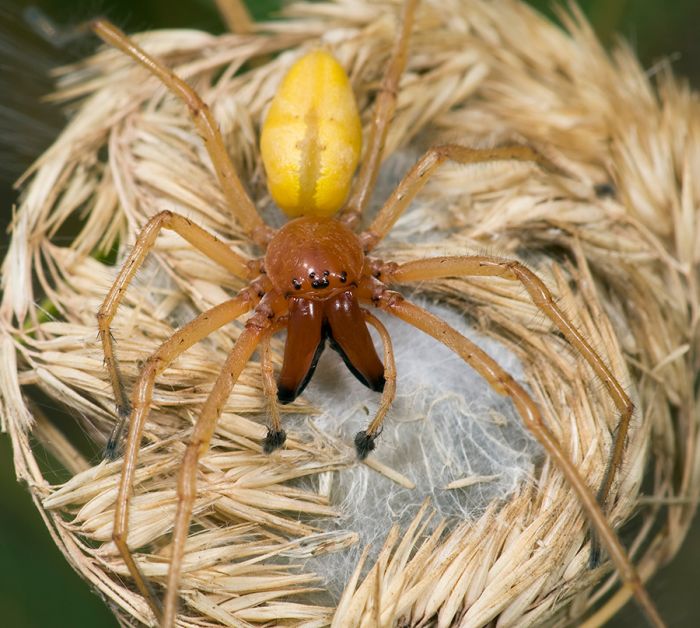
In the world there are real spiders-murderers, with whom it is better not to meet a person.
The first appearance of such an enemy is best to go home. After all, the bite of such a spider can easily lead to a fatal outcome. Spiders we meet quite often, even in our own apartment in a dark corner you can find representatives of arachnids.
Our "apartment pets" are completely harmless to humans, they pose a threat only to flies. But in countries where the climate is warmer than ours, there are very different spiders - big, scary, poisonous and incredibly dangerous.
Yellow (gold) spider lives mainly in European countries. These spiders are rather small (10 mm in length). Yellow spiders build bags of a pipe type under things like stones, so they serve as a home. Sometimes they are inside the house. Their bites are known to be at least clinically dangerous and are often misdiagnosed as bites of the hermit's brown spider. Spider bite causes severe pain with the development of necrotic wounds (although not as intensely as due to the brown hermit). Like other spiders, they tend to bite on the defensive.

The Brazilian wandering spider (Phoneutria nigriventer) is considered one of the most dangerous spiders in the world. He lives in South America, does not create a network, and never stops at one place. That's why he got his name. The size is only 10 centimeters in length, but it can kill about 225 mice with its poison. He can hardly kill an adult, but can actually lead to a major allergic reaction. Fortunately, an antidote for his poison was found. Mainly eats insects, spiders are smaller than themselves, and sometimes birds, or even lizards, which are much larger than himself. He prefers to hide in fruit baskets, especially among bananas, and so he received the nickname "banana spider".
Brown hermit spider

The spider's brown spider, or the violin spider (Loxosceles), is one of the few spiders in the world that is considered harmful to humans. Occurs in the Midwest and in the southeastern United States, especially in California. The spider is small - from 0.6 to 2 centimeters - which makes it not very noticeable. He is looking for warm, dry and dark places, such as lofts, cabinets, or old tires. Unlike most spiders with 8 eyes, the brown hermit has 6 eyes in 3 pairs. When you bite a brown hermit, often the symptoms manifest themselves within the first 24 hours. At the same time, all the poison spreads throughout the human body. That is why it is important to hospitalize the patient as soon as possible.

This spider is known to be very dangerous to humans because of its poison, which exceeds the poison of the rattlesnake by a multiple of 15. Black widows inhabit prairies and desert places around the world. Female are about 2 cm in length and are more dangerous than males. The female always kills the males after mating, which is why the black widow got its name. They attack only when they see a threat. The poison is very dangerous, and in case of a bite, the antidote must be entered within 30 seconds.

Tarantulas are a group of hairy and very large (about 15-30 cm in length) spiders, which belong to the family of tarantula spiders. There are many varieties of coloring tarantulas - from light brown to dark gray. Tarantulas live in deep and moist burrows in steppes and deserts. In the dark, tarantulas prey on their prey.
Water spiders (Argyroneta)

Water spiders or underwater spiders inhabit ponds in Northern and Central Europe and Northern Asia. Argyroneta is one of the types of air-water spiders that spend their entire life underwater. Swim well, at a speed of 2.3-3.5 cm per second, with its length of 1.5-1.7 cm. The water spider weaves its nets among aquatic plants and reserves with air from the surface, which looks like a diving bell.
![]()
Crab spider includes more than 3000 species of crab spider. They got their name from Selene, the Greek goddess of the Moon. Like crabs they can move to the side and back. Typically, spiders crabs are in North America, and sometimes in southern Europe and Asia. They do not weave cobwebs, they usually hunt on the ground, hiding among vegetation, for example, flowers.

Karakurt is a species of the previous spider, and very similar to it, but somewhat larger. True, karakurt usually lives away from people, "in freedom," in the steppes and in open territories. Karakurt has a very serious weapon - poison it can harm even a large animal, for example, a horse. It also lives in our latitudes - for example, a couple of years ago karakurt led to big problems in the Crimea, from its bites suffered tourists and locals. True, it is worth saying that he rarely attacks himself - only if he is disturbed.

Spider-tarantula Terafosa Blond (Latin Theraphosa blondi) or tarantula-goliath is the largest spider in the world. The length of his body reaches 9 cm, and the span of the paws is of the order of 25 cm. The largest spider of this species was caught in South America in Venezuela in 1965, its swing was 28 cm. This spider-record was entered in the Guinness Book of Records. For a long time it was believed that the poison of a tarantula spider is very dangerous, it was compared even with a poison to curare. However, recent studies have confirmed the opposite. Scientists have proved that the poison of these spiders can be compared with an analgesic or with sleeping pills. Fangs of Goliath powerful enough to bite the skin of a person, but it bites only for self-defense, and then, as a rule, does not inject poison, because it understands that it is beyond the power of a person to kill a person.





